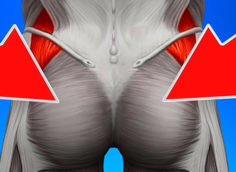Traditional anti-rotation core exercises, such as the Pallof press, have their place in rehab clinics and gyms, but most strong lifters want a more advanced approach.
So let's look at an effective anti-rotation progression that you can do with a low-row cable machine, low pulley, or cable column. It's basically a row you perform one arm at a time. This unilateral loading will give your core a serious challenge.
Simply swap one of your regular rowing exercises out and replace it with one of these to shore up your core and train like an athlete.
- Sit on the low-row bench or on the floor in front of a cable machine. Grab the cable handle with one hand.
- While maintaining an upright trunk and staying squared to the machine, do a single-arm row. Keep the non-working arm "punched" forward as a reminder to prevent trunk rotation.
- Complete all reps on one side and then switch arms.
Since you get stability from the seated position and can prop your feet against the machine, this is likely the variation you can load the heaviest. However, core stability is more than pure strength; control plays an important role too. So be sure to try the following progressions, which add complexity.
- Get in a half-kneeling position behind the cable machine. The knee on the floor will be on the same side as your working arm.
- Maintain an upright trunk and stay squared to the machine. Do a single-arm row. Keep the non-working arm "punched" forward throughout.
- Complete all reps on one side, then switch stance and arms.
- Squat at half-depth behind the cable machine.
- While maintaining an upright trunk and staying squared to the machine, do a single-arm row.
- Lower into the lunge position by taking a back-step lunge with the leg on the side that's holding the cable handle. Keep your knee hovering just above the floor throughout the exercise.
- Maintain an upright trunk squared to the machine. Do a single-arm row.
- Stand with your feet shoulder-width apart, cable handle in one hand. Allow the cable to pull your torso forward while you drive your hips back and hinge like a deadlift.
- While keeping the non-working arm "punched" forward, row the cable as you extend your hips and stand tall.
- Reverse the movement and repeat. Complete all reps on one side, then switch arms.
- Stand on the leg opposite of the hand holding the cable handle. Keep a slight bend in your knee.
- Allow the cable to pull your torso forward while you drive your hips back and hinge like you would during a single-leg Romanian deadlift. Your non-weight-bearing leg should be extended behind your body.
- Row the cable as you extend your hips. If needed, tap the forefoot of the non-weight-bearing leg to the floor when in the upright position between reps.
- Reverse the movement and repeat.
This terminal progression – the single-leg hip hinge with unilateral cable row – is among my favorite "core" exercises for use with athletes. It adds the challenge of a single-leg RDL to the cable row to train the posterior serape, the sling-like chain of muscles and fascia that wraps around the body, facilitates force transmission, and enhances athletic performance (2).
This progression promotes increased involvement of the hip and rotational core musculature while amplifying the complexity (1, 2). "Complexity" describes the technical difficulty of an exercise. As this variable increases, you'll likely need to drop the weight to do it well.
Unilateral cable row variations are different than the Pallof press and other common anti-rotation moves. Like the Pallof press, the unilateral cable row applies an isometric anti-rotation challenge to the trunk. However, its resistance arm is maintained throughout the entire exercise. This means the rotational core muscles are under constant tension.
Your lat is trained by the resisted rowing action of the exercise, which is good since your lats are an important muscle of force transfer between the core and upper extremities. And it stabilizes the low back via its attachments to the thoracodorsal fascia.
That's why a unilateral cable row should be a go-to anti-rotation exercise in your core training.
- Cook G et al. Functional training for the torso. Strength & Conditioning Journal. 1997;19:14-19.
- Santana JC et al. Anterior and posterior serape: The rotational core. Strength & Conditioning Journal. 2015;37:8-13.
- Mullane M et al. The Pallof Press. Strength & Conditioning Journal. 2021;43:121-128.





